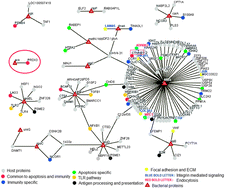*
Corresponding authors
a
Centre for Genomics and Applied Gene Technology, Institute of Integrative Omics and Applied Biotechnology (IIOAB), Nonakuri, West Bengal-721172, Purba Medinipur, India
E-mail:
dr.barh@gmail.com
Fax: +91-944 955 0032
Tel: +91-944 955 0032
b
Department of Biosciences and Biotechnology, School of Biotechnology, Fakir Mohan University, Jnan Bigyan Vihar, Balasore, Orissa, India
c
School of Biotechnology, Devi Ahilya University, Khandwa Road Campus, Indore, MP, India
d
Unidad de investigacion, Facultad de Medicina, Universidad Autónoma de Sinaloa. Cedros y Sauces, Fraccionamiento Fresnos, Culiacán Sinaloa 80246, México
e
Instituto de Ciências Biológicas, Universidade Federal de Minas Gerais, Belo Horizonte, MG, Brazil
f
Instituto de Ciências Biológicas, Universidade Federal do Pará, Belém, PA, Brazil
g
Department of Genomic Science, School of Biological Sciences, Riverside Transit Campus, Central University of Kerala, Kasaragod, India
h
Department of Computer Science and Center for the Study of Biological Complexity, Virginia Commonwealth University, 401 West Main Street, Room E4234, P.O. Box 843019, Virginia 23284-3019, Richmond, USA
i
Center for Life Sciences, School of Natural Sciences, Central University of Jharkhand, Ranchi, Jharkhand State, India
j
University of Florida, College of Medicine, Gainesville, Florida, USA
k
Global Integrated Services Unit University of Vermont Center for Clinical & Translational Science, College of Medicine, Burlington, VT, USA
l
Dominion Diagnostics LLC, North Kingstown, Rhode Island, USA
m
Computational Biology Group, Department of Mathematics and Computer Science, University of Southern Denmark, Campusvej 55, DK-5230 Odense, Denmark


 Please wait while we load your content...
Please wait while we load your content...